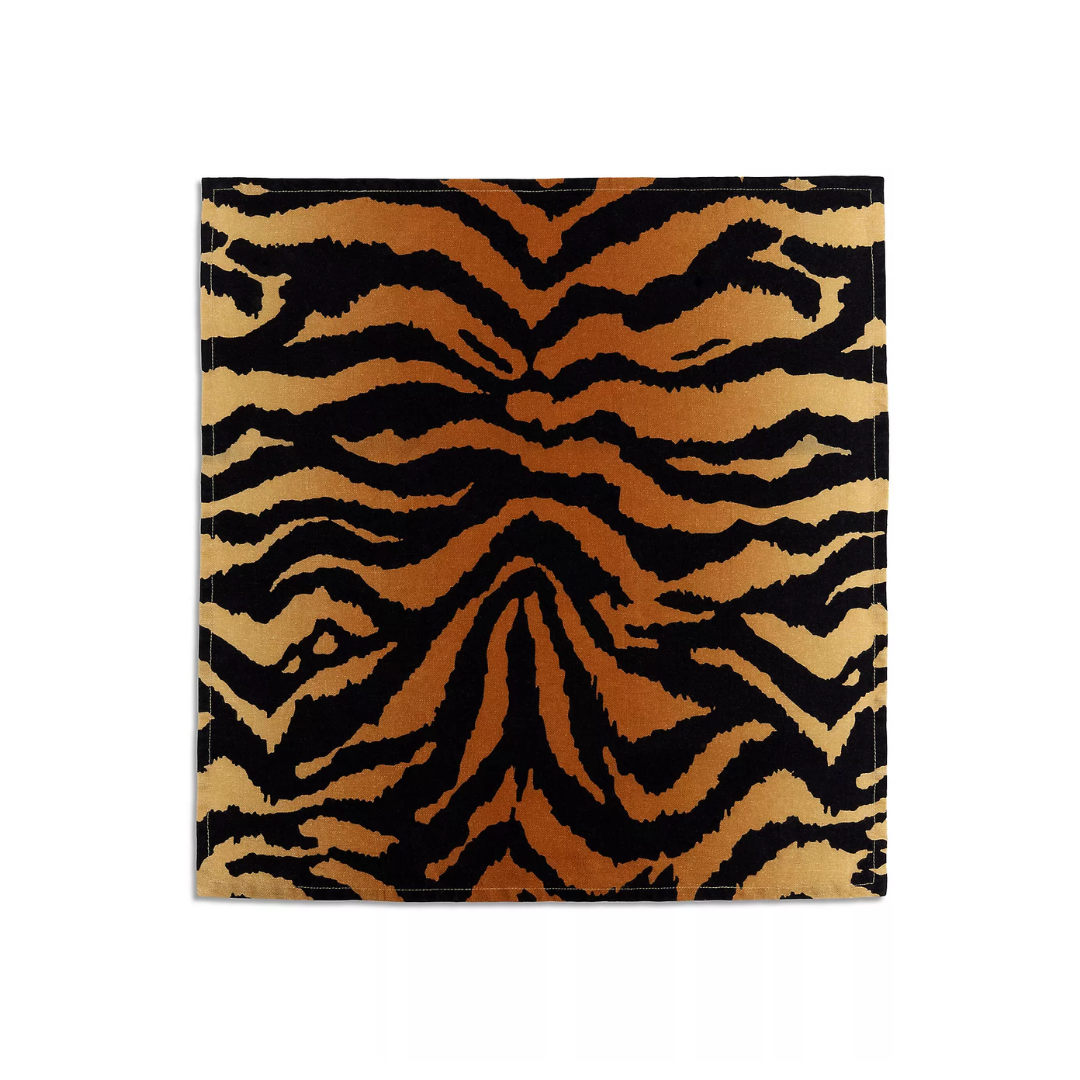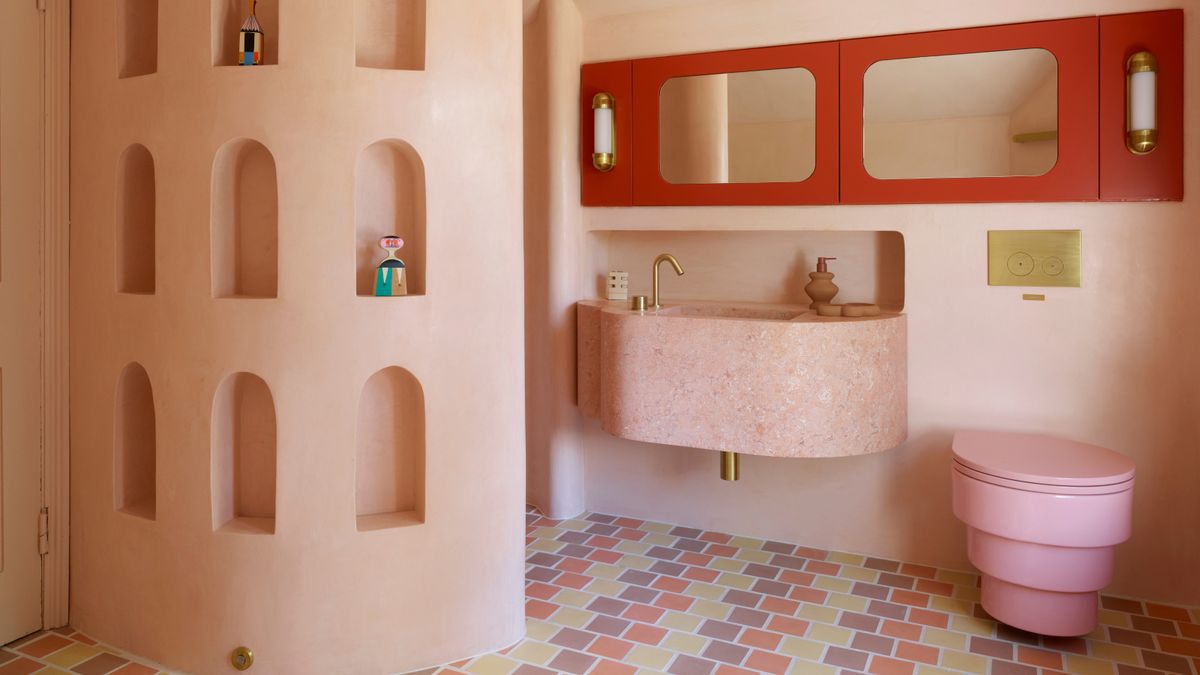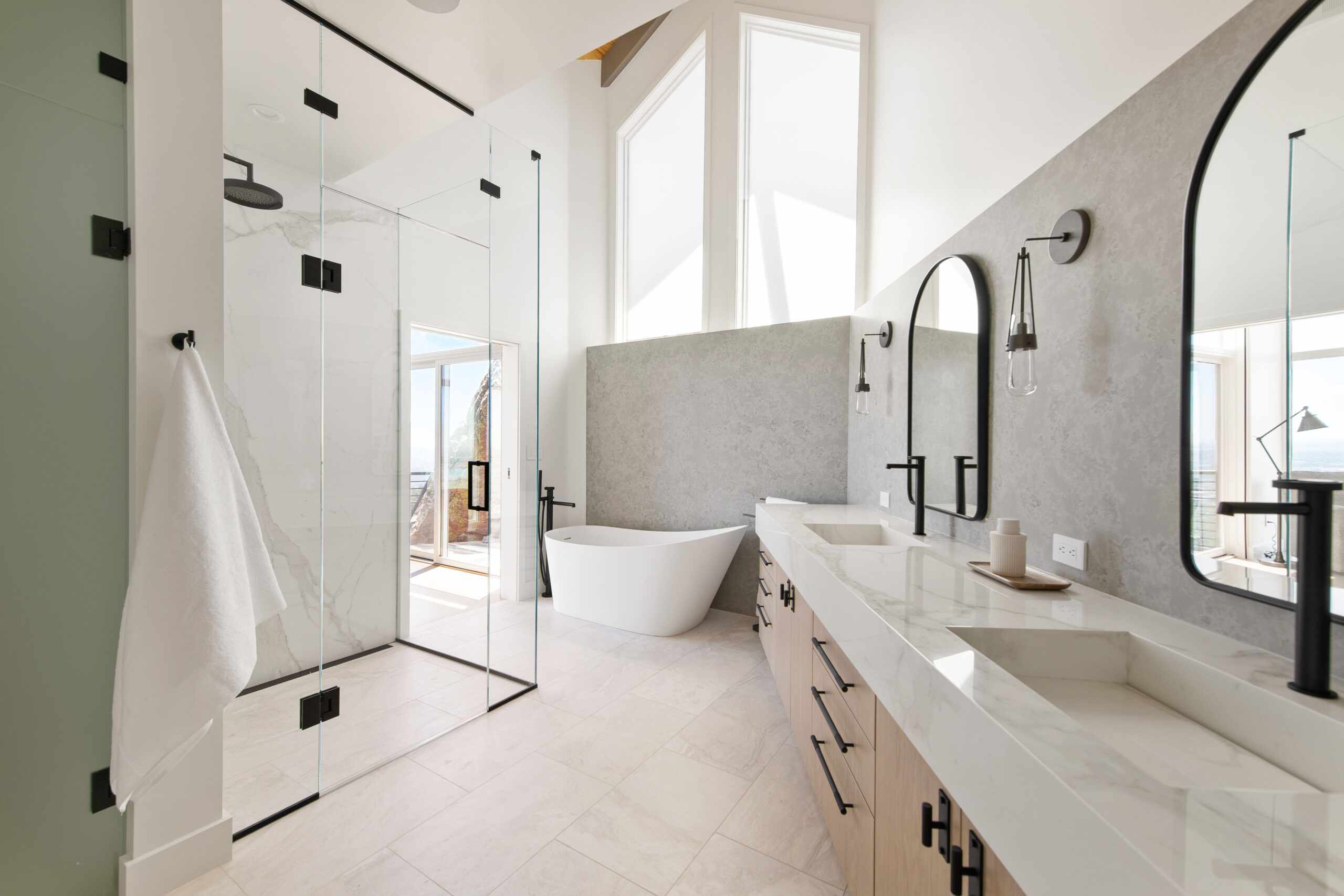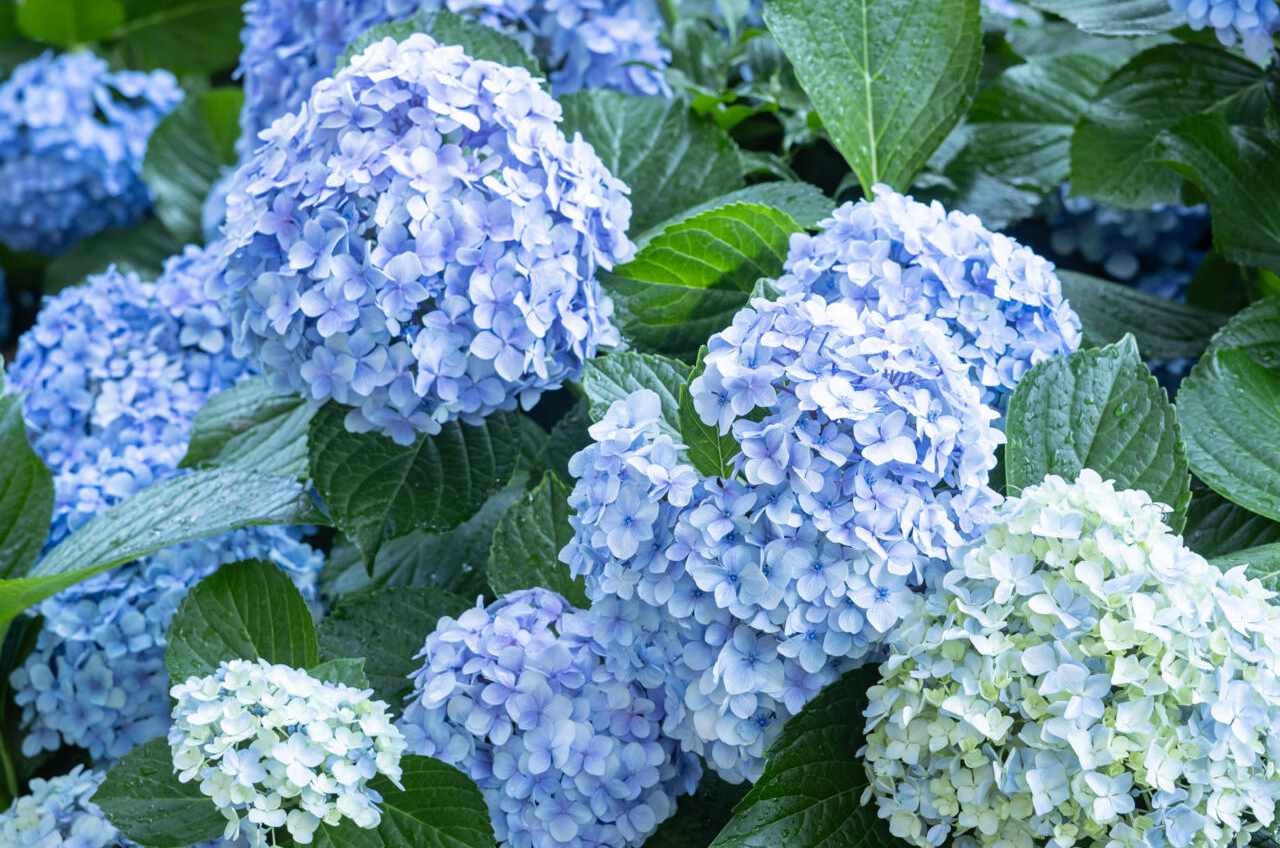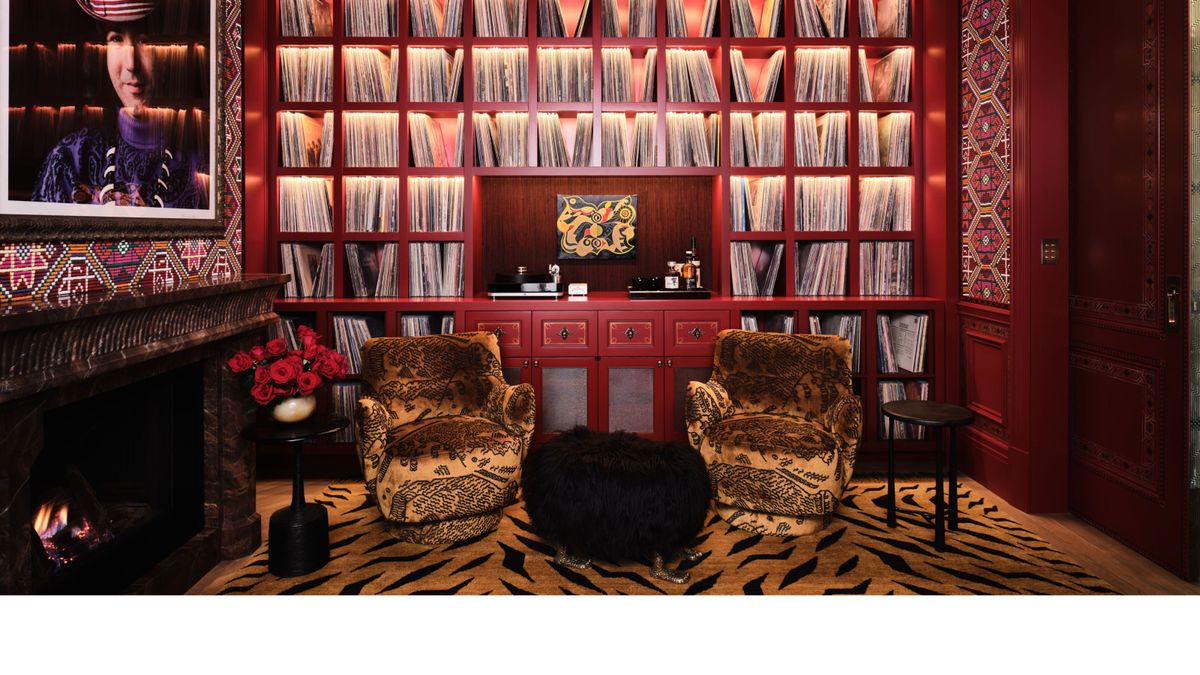
Leopard Spots Are Over — Here’s Why Tiger Print Is the Next Big Trend in Design
Have we become numb to leopard print? Possibly. It’s sprawled across the floors of too many see-and-be-seen restaurants, and thanks to last year’s “Mob Wife” TikTok aesthetic, every influencer (and every impeccably cool great aunt who bought it new in the 60s) has a cheetah-print coat on standby. Fawn had its chance but never quite hit — too soft, too subtle — perhaps a little too nice.
But tiger — the latest feline on the fray — is bringing more bite, more swagger, and just enough danger to make decorating with animal prints feel subversive again.
It’s bolder, sharper, and carries a defiant glamour that makes leopard look almost… polite. “Tiger print brings a boldness that feels fresh and a little more rebellious,” says interior designer Annie Downing. “It has a strong sense of movement, a graphic punch, and a certain regality that wants attention.” Scalamandré’s now-iconic tiger print, for instance, has been a favorite of both stately homes and rule-breaking boutique hotels alike.
Tiger print’s warmth anchors a space, creating a counterpoint to eclectic elements — like the riot of colorful book spines stacked on this living room shelf.
(Image credit: Douglas Friedman)
As is and was the case for the leopard revival before it, the tiger trend is far from new. Your favorite 1970s rockstar probably had a tiger-striped rug in their sunken living room. “Leopard has decades — if not centuries — of credibility, but tiger print isn’t exactly new either,” says Annie. “It has deep historical roots, from antique carpets to French textiles, so while it might feel like a ‘moment’ right now, it’s hardly a passing trend.”
The key, of course, is execution. Instead of an over-the-top, literal approach, 100% of the time, designers are taking toward tiger print with modern nuance. Studio Shamshiri and Christopher Farr have both reinterpreted the motif with graphic, lightning bolt-like effects — more suggestion than stripe.
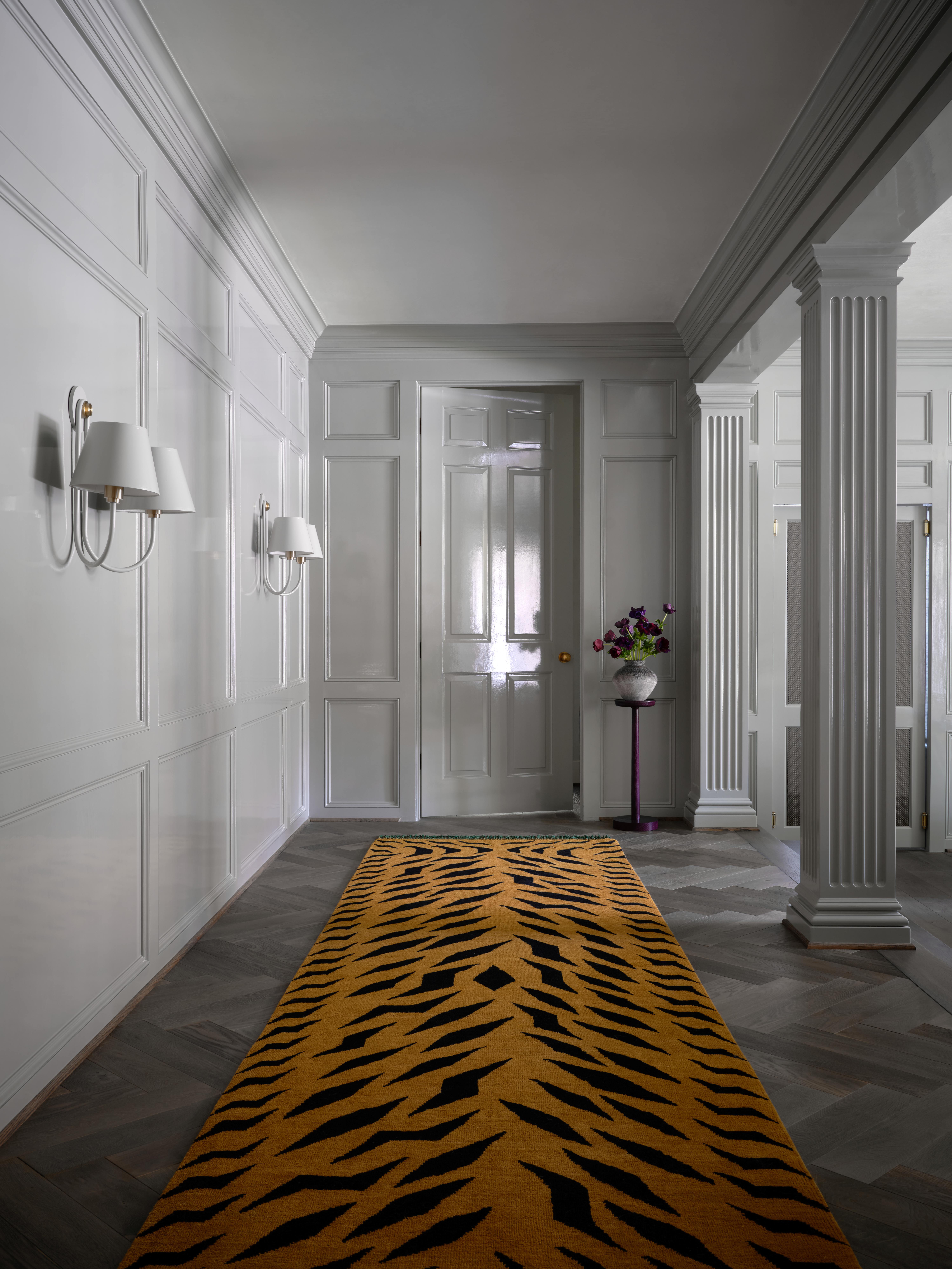
A little goes a long way. One well-placed tiger print piece can electrify a space, adding movement, depth, and a healthy dose of attitude.
(Image credit: Lindsay Brown. Design: Annie Downing. Stylist: Adam Fortner)
Annie says that getting it right hinges on two things: “restraint and context.” Consider Tigre, the recently opened NYC hotspot inspired by the same tiger craze fueling this revival. The space offsets energetic patterns with warm, moody lighting and richly textured solids — mohair, velvet, and aged leather are all fair game.
Not all of us have a bar to furnish, but Annie suggests starting small: an ottoman, a statement pillow. That said, she’s not against a full-fledged tiger print wallpaper moment, either.
Tiger print carries a strong legacy, but today remains anything but tame. Shop 2025’s boldest look — decidedly not declawed.
Ahead, six ways to walk on the wild side.
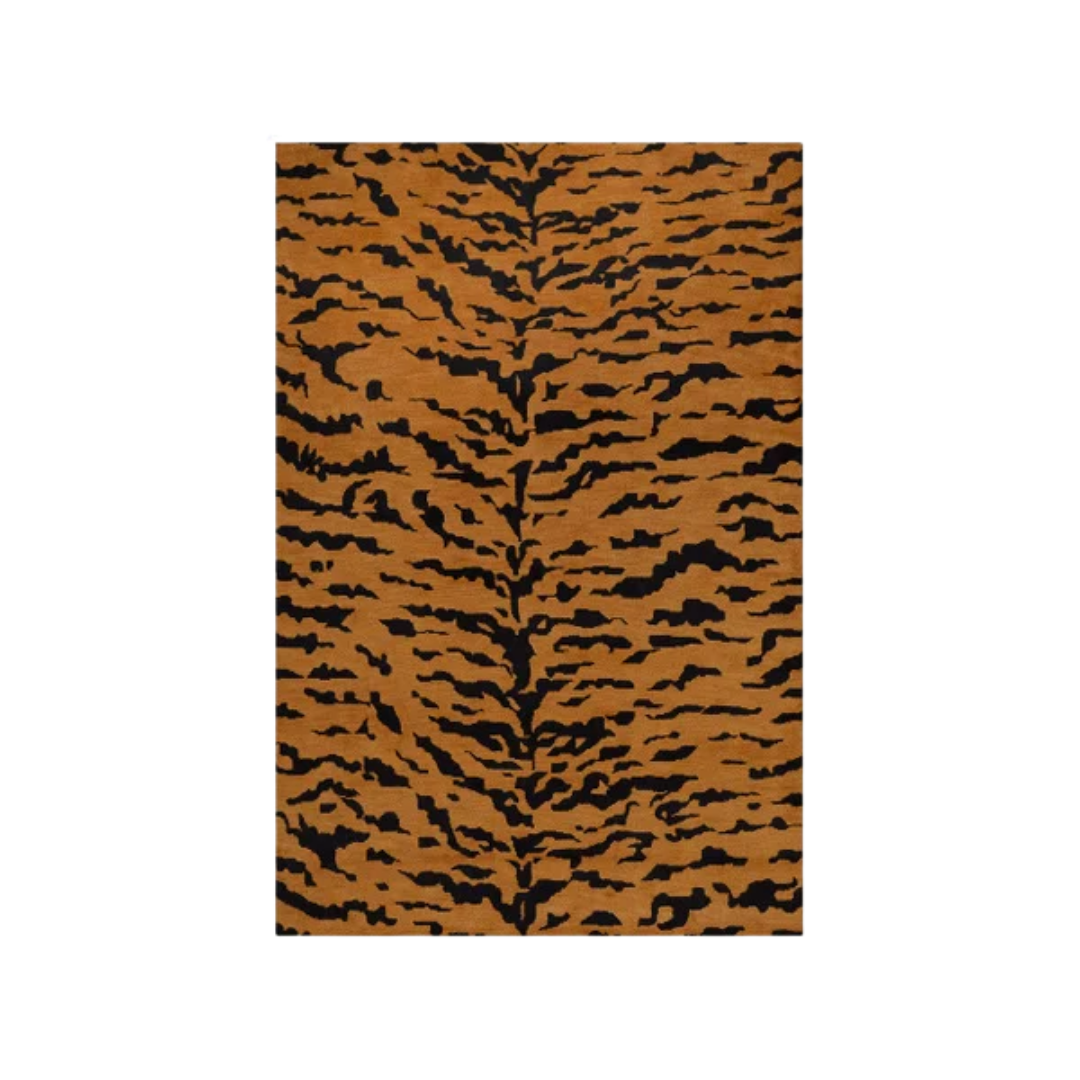
Nordic Knots
Tigris, 8′ x 10′
Chances are, you’ve seen this patterned rug before — likely on Instagram. Originally designed for Tase Gallery, it merges bold, art-forward energy with a sense of refinement. Go for the rich, rust-based version (pictured), or opt for a softer beige tiger stripe for something more understated.
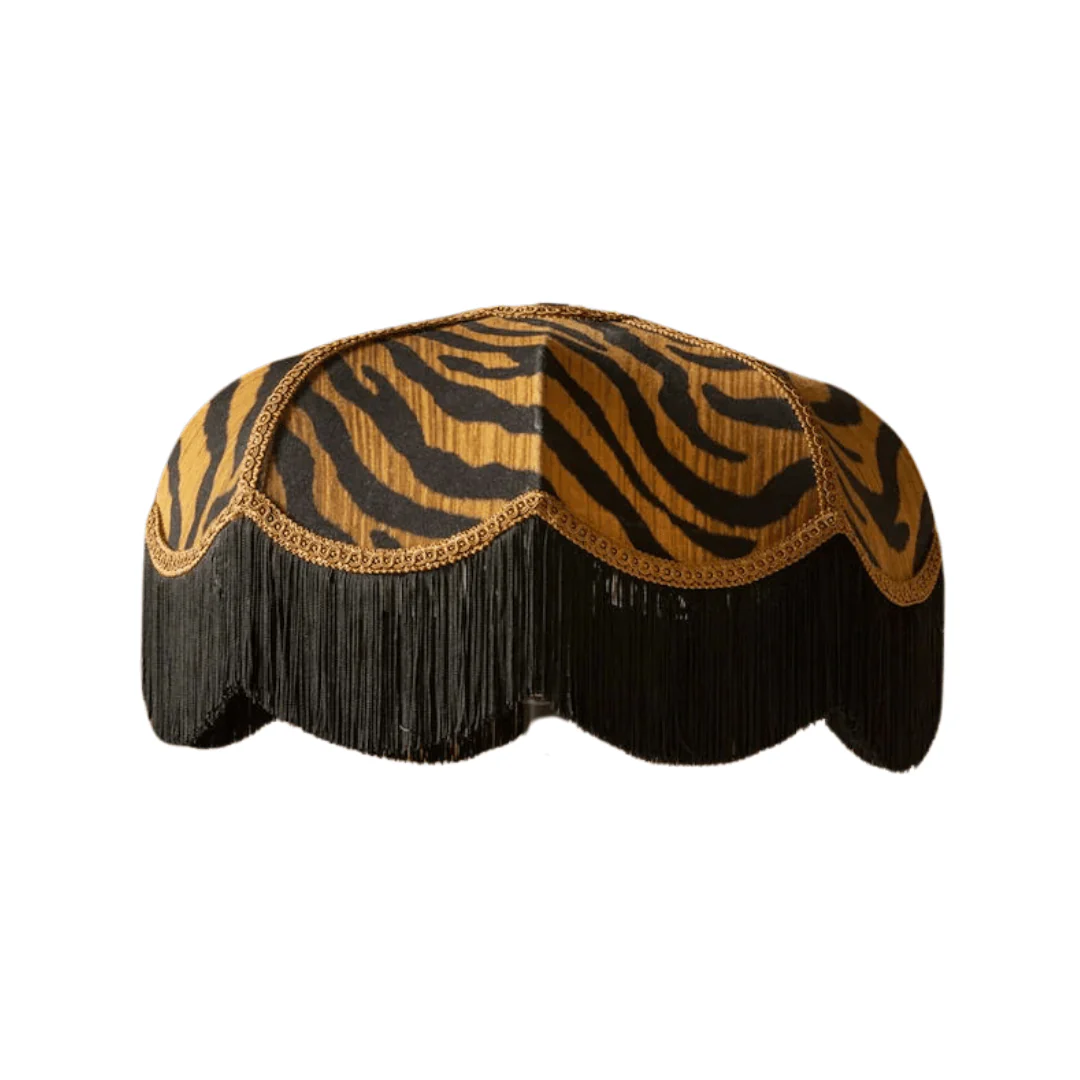
Tinker & Tallulah
“The Tigress” Lampshade
Some prints come and go, but tiger has legs — just ask this Art Deco lampshade by Tinker & Tallulah. Inspired by the coat of an Indian tiger and finished with playful tassels, it proves that detail is everything.
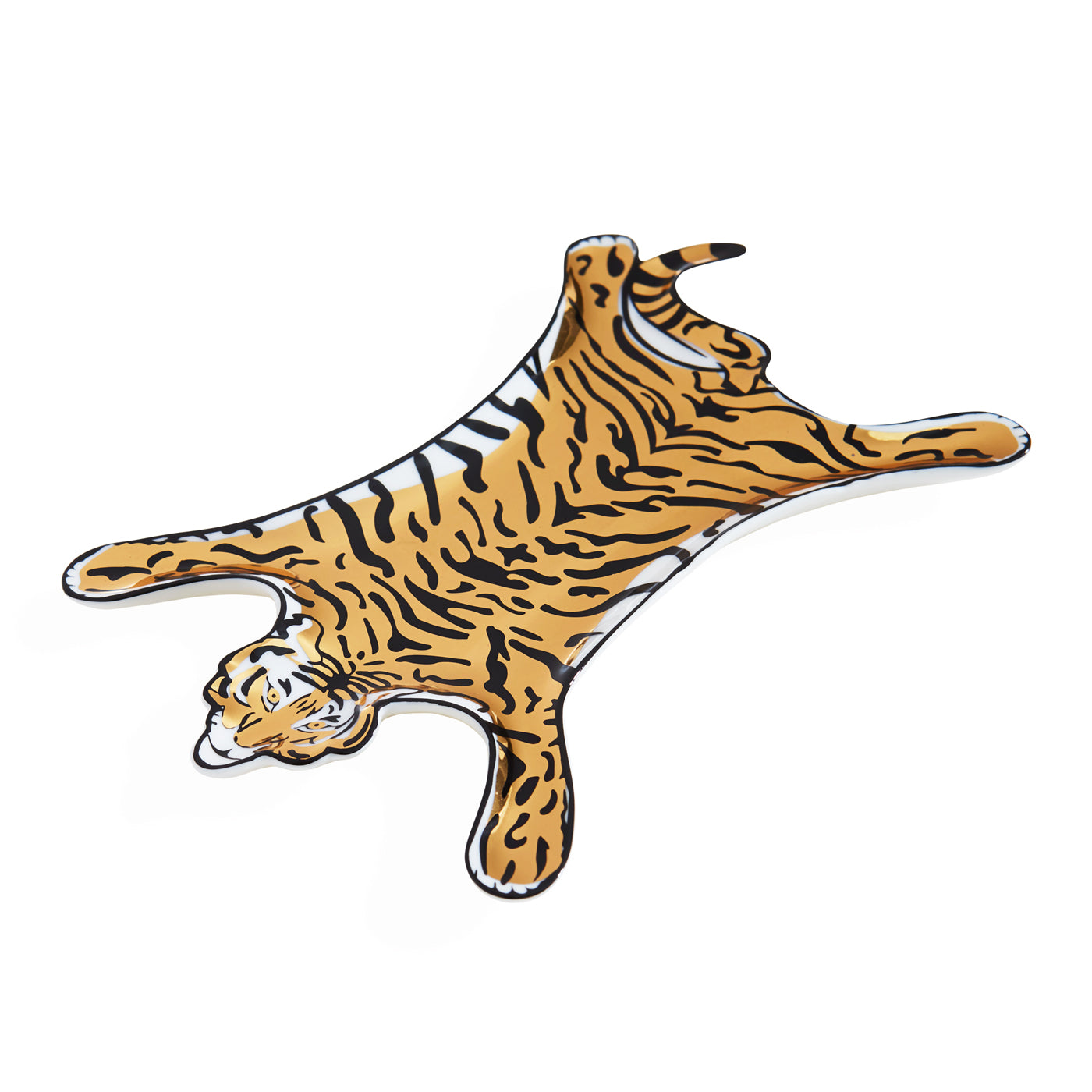
Jonathan Adler
Tiger Stacking Dish
You could, of course, go for an actual tiger — trinket tray, that is. Jonathan Adler’s sculptural take is both a wild resting place for your jewelry and keys and an instant shortcut to an effortlessly collected-looking tabletop.

Z Gallerie
Bronze Tiger Lumbar Pillow
For those who find traditional tiger print a little too bold, this modern, lightened-up version — reimagined as a lumbar cushion — strikes a balance between statement and subtlety. A pop of cobalt piping seals the deal.
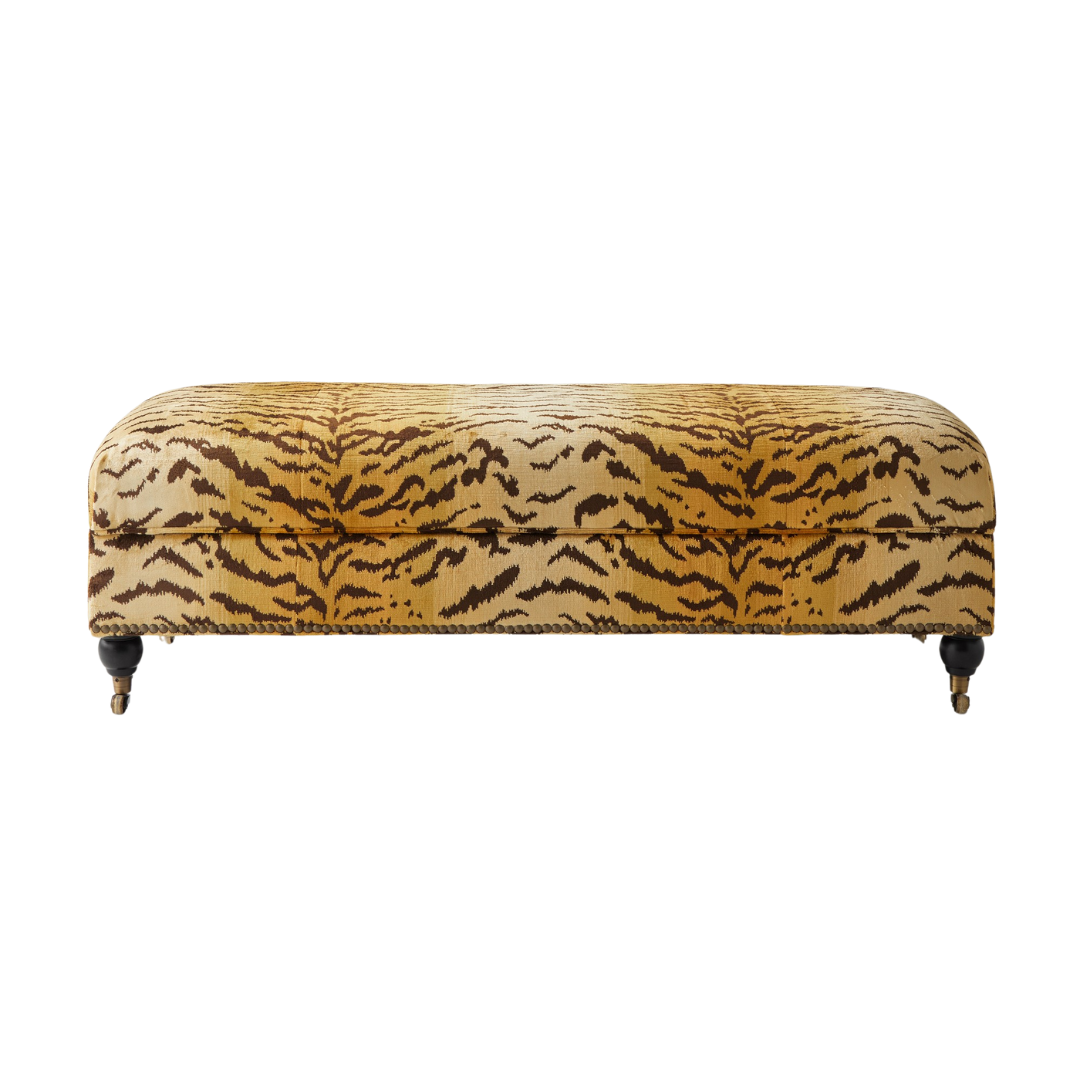
Williams Sonoma
Soho Storage Bench in Scalamandre Tigre
Scalamandré’s tiger print is the gold standard — arguably the most recognizable version of the motif. Here, it’s reinterpreted as a bench with antique-inspired feet, a plush seat, and even hidden storage — proof that wild sensibilities and everyday wear can coexist.
Given the sheer volume of animal prints making their way into interiors, we had to ask: animal prints on animal prints — zebra print on tiger print, yes or no?
“For me, it’s a no,” admits Annie. “I love a bold moment, but mixing multiple animal prints feels overwhelming — too much.”
That said, if you must mix, she has one rule: “Keep one print dominant and let the other be an accent in a more subtle, small-scale application. Otherwise, I say let the tiger (or leopard) have its moment without competition.” Duly noted.



